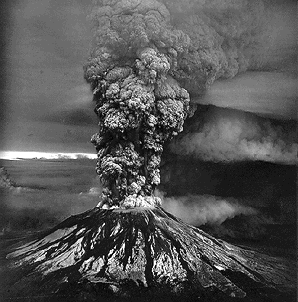Vulcanologists classify volcanoes into three groups: active, dormant and extinct. A dormant volcano is one that isn't currently active or erupting, but geologists think that it's still capable of erupting.
One of the best examples of
a dormant volcano
is Mauna Kea, one of the five volcanoes that make up the Big Island of Hawaii. The peak of Mauna Kea is 4,207 meters above sea level, but 10,203 meters above the base of the floor of the Pacific Ocean. Geologists classify Mauna Kea in the post-shield stage of volcanic evolution. It stopped being a shield volcano about 200,000 years ago. Mauna Kea's last eruption is thought to be 2460 BC.
Volcanoes become dormant because the Earth's plates are constantly shifting above volcanic hotspots. Each time the hotspot reaches the surface, it creates a new volcano. The tectonic plate continues to shift above the hotspot, and eventually the volcano is shut off from the magma chamber beneath. And so the magma finds a new source to the surface, creating a new active volcano. The older volcano stops erupting and becomes dormant. Here's more information on the
active volcanoes in the world
.
Dormant volcanoes do still erupt from time to time, however, sometimes with devastating results for people who thought the volcano was completely extinct.
We have written many articles about the Earth for Universe Today. Here's an article about
different types of volcanoes
, and here's an article about the most
active volcanoes in the world
.
Want more resources on the Earth? Here's a link to
NASA's Human Spaceflight page
, and here's
NASA's Visible Earth
.
We have also recorded an episode of Astronomy Cast about Earth, as part of our tour through the Solar System -
Episode 51: Earth
.
 Universe Today
Universe Today
